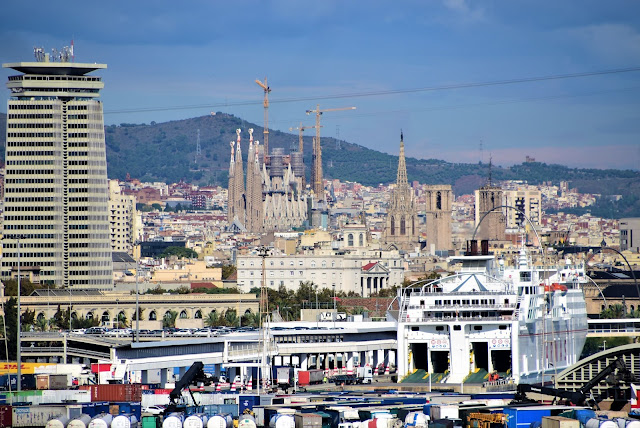Barcelona is a Gothic and Modernist marvel on the Mediterranean Sea, it's quirky, cosmopolitan and effortlessly cool. This city breathes life: from chefs foraging for fresh produce in La Boqueria Market at the crack of dawn to partygoers leaving El Born's pulsating clubs around the same time.
Barcelona's real charm is in small details — the hidden courtyards of Barri Gòtic, the light catching Sagrada Família's wax-like turrets — all coming together to make the Catalan capital one of Spain's most livable and loveable cities.
The architecture is very influenced by Gaudi at every turn. You see unusual turrets and balconies like out of a fantasy movie. A very different city which I would have needed more time to explore.
Barcelona's real charm is in small details — the hidden courtyards of Barri Gòtic, the light catching Sagrada Família's wax-like turrets — all coming together to make the Catalan capital one of Spain's most livable and loveable cities.
The architecture is very influenced by Gaudi at every turn. You see unusual turrets and balconies like out of a fantasy movie. A very different city which I would have needed more time to explore.

Antoni Gaudí has left his fantastical stamp on the city in the twirling spires of La Sagrada Família cathedral which was his favorite passion. The Basilica and Expiatory Church of the Holy Family is a large unfinished Roman Catholic church designed by Spanish architect Antoni Gaudí (1852–1926).
Gaudí's work on the building is part of a UNESCO World Heritage Site, and in November 2010 Pope Benedict XVI consecrated and proclaimed it a minor basilica, as distinct from a cathedral, which must be the seat of a bishop.
Gaudí devoted the remainder of his life to the project, and he is buried in the crypt. At the time of his death at age 73 in 1926, when he was run down by a streetcar, less than a quarter of the project was complete.

 One of Gaudi's most famous structures besides the Sagrada Familia is The Pedrera. This is one of Gaudí’s main residential buildings and one of the most imaginative houses in the history of architecture. This building is more sculpture than a building. The façade is a varied and harmonious mass of undulating stone that, along with its forged iron balconies, explores the irregularities of the natural world. UNESCO recognized this building as World Heritage in 1984.
One of Gaudi's most famous structures besides the Sagrada Familia is The Pedrera. This is one of Gaudí’s main residential buildings and one of the most imaginative houses in the history of architecture. This building is more sculpture than a building. The façade is a varied and harmonious mass of undulating stone that, along with its forged iron balconies, explores the irregularities of the natural world. UNESCO recognized this building as World Heritage in 1984.
Casa Batlló is the result of a total
restoration in 1904 of an old conventional house built in 1877. Gaudí used for it the typical constructive
elements of the Modernisme (Catalan Art Nouveau) that include ceramics, stone,
and forged iron. Even though it was
highly criticized by the city during construction due to its radical design
that broke all the bylaws of the city, in 1906 the Barcelona City Council
awarded it the recognition of being one of the three best buildings of the
year.
This is Casa Visens, Gaudí’s first important building. Built between 1883 and 1888, Casa Vicens is an imaginative residential project made for a wealthy family that owned a ceramic factory. This is clearly reflected in the “trencadis” façade that contains a significant variety of ceramic decorations. You can also see some Islamic architecture influences in its façade and some of its rooms.
And the final dog of my vacation is . . . . .
"LULU"





































No comments:
Post a Comment